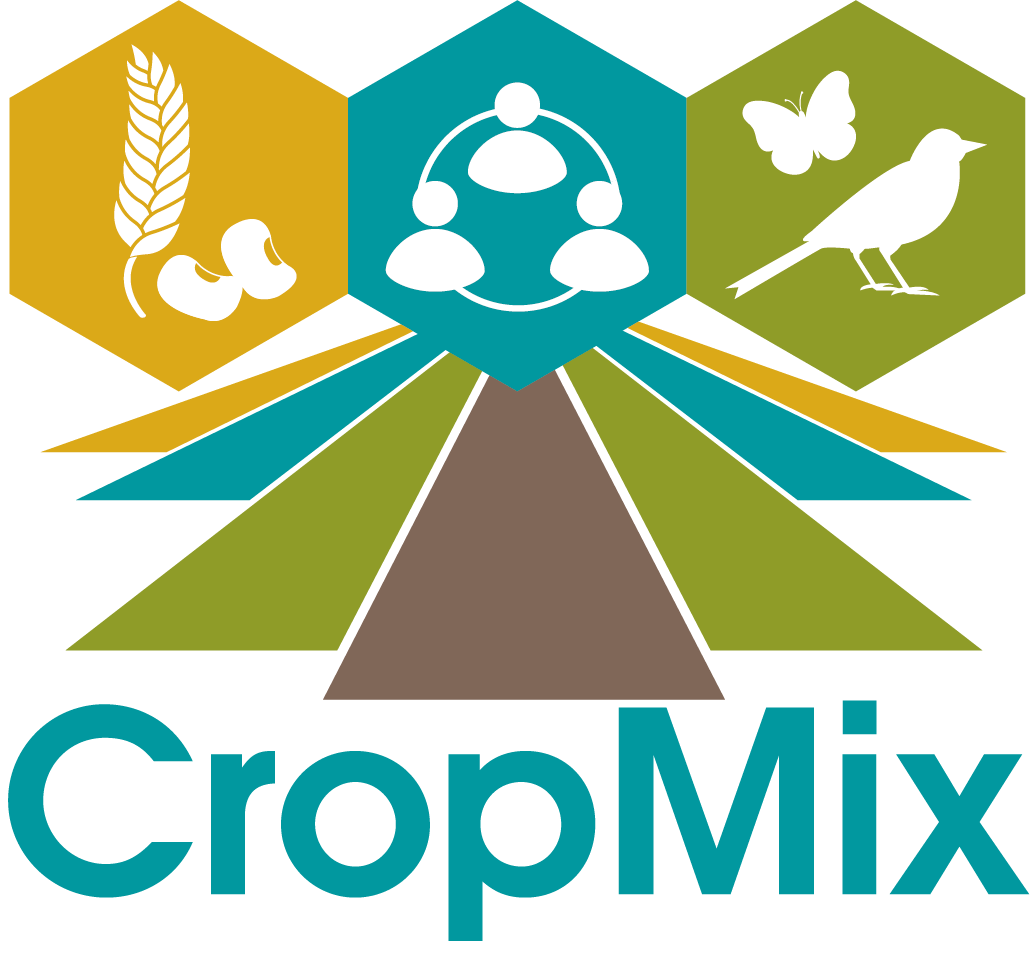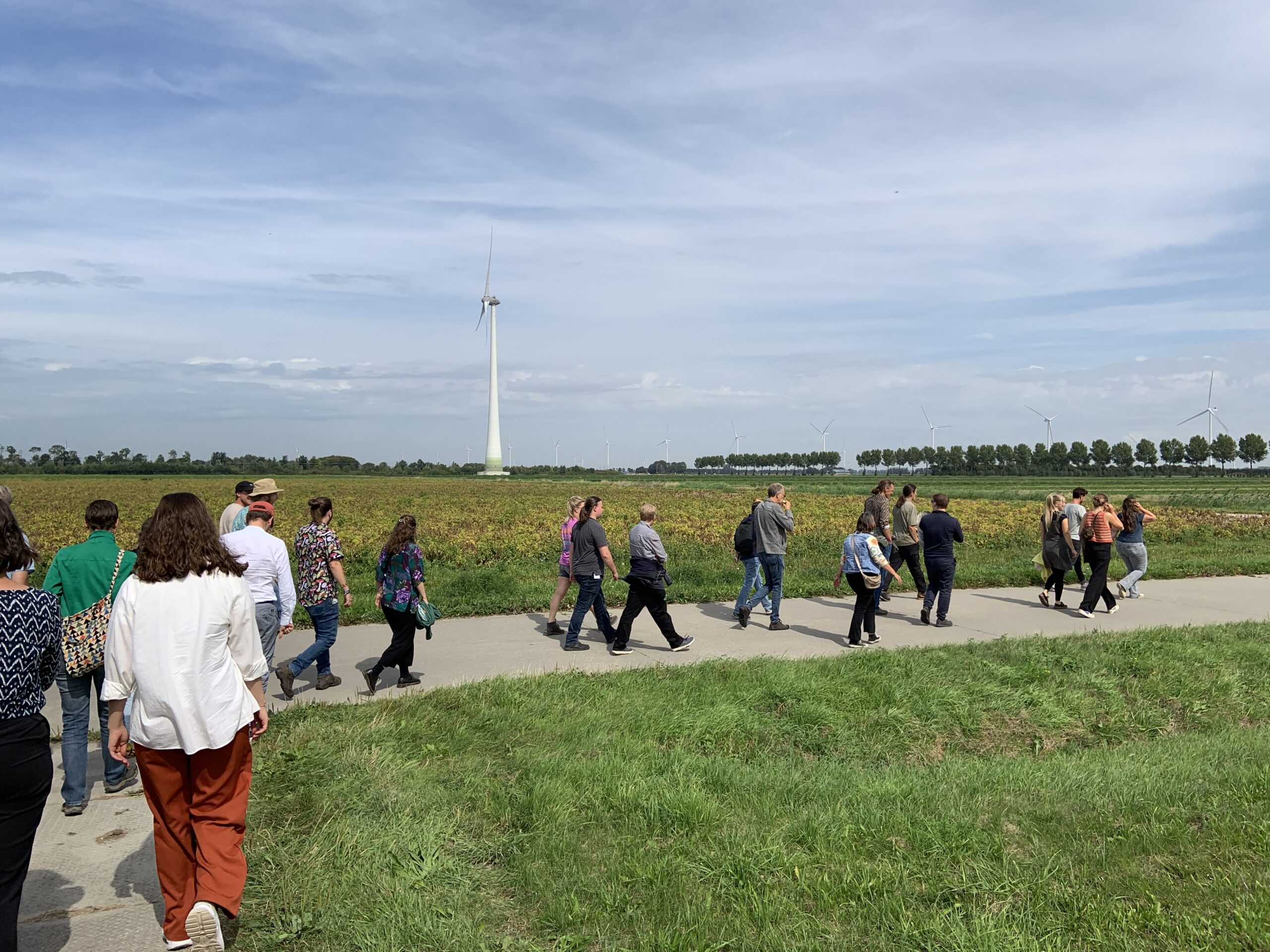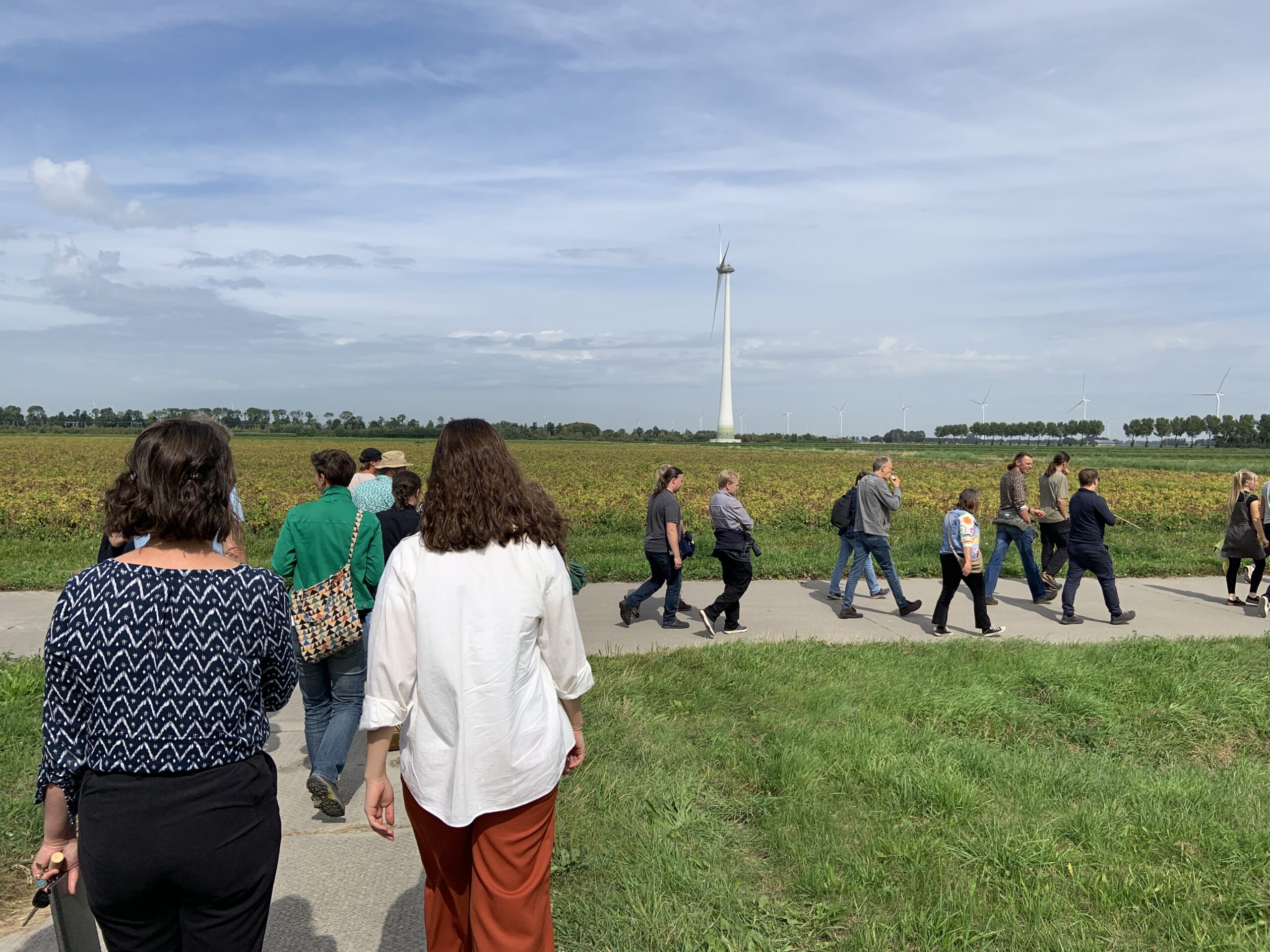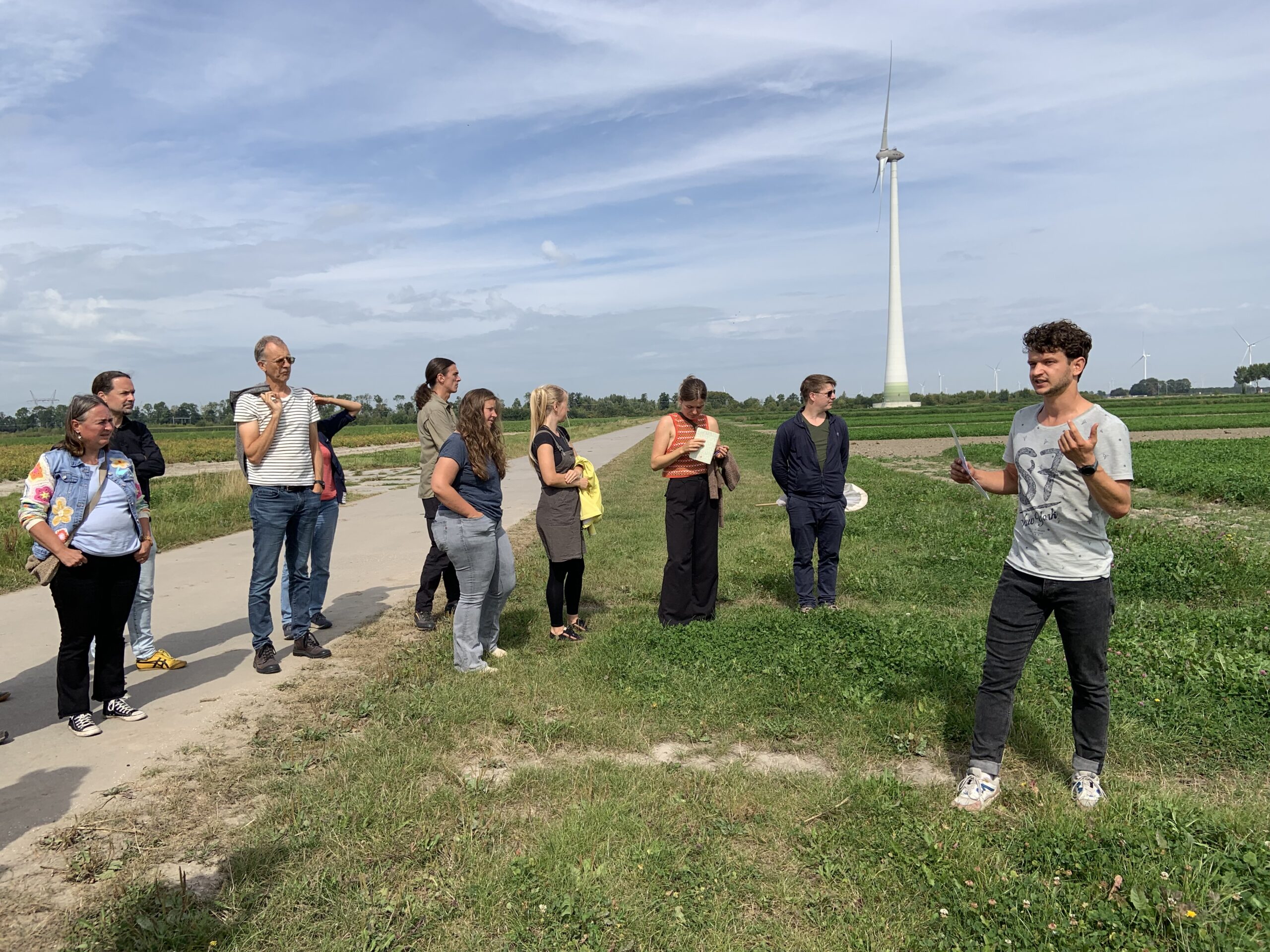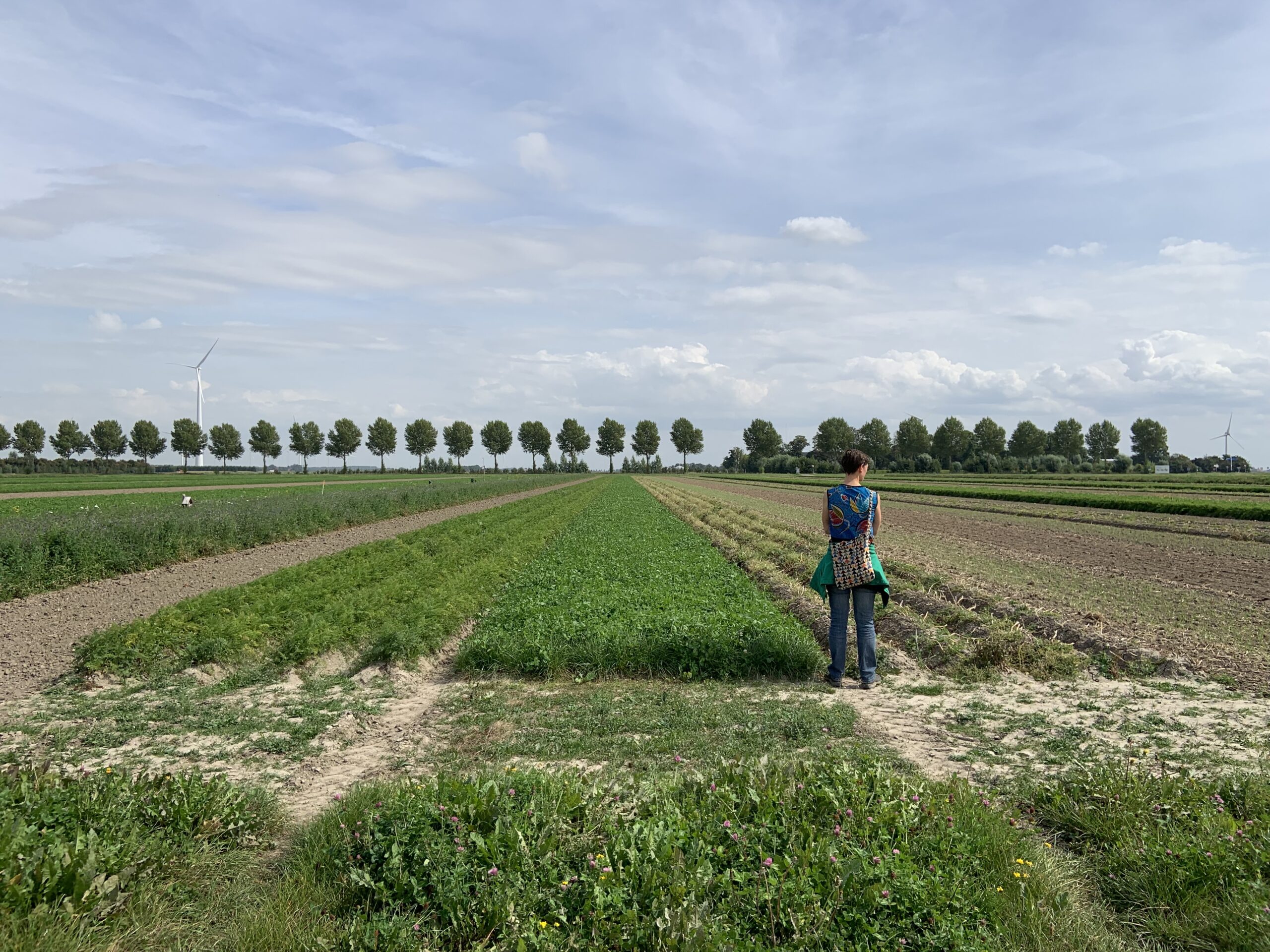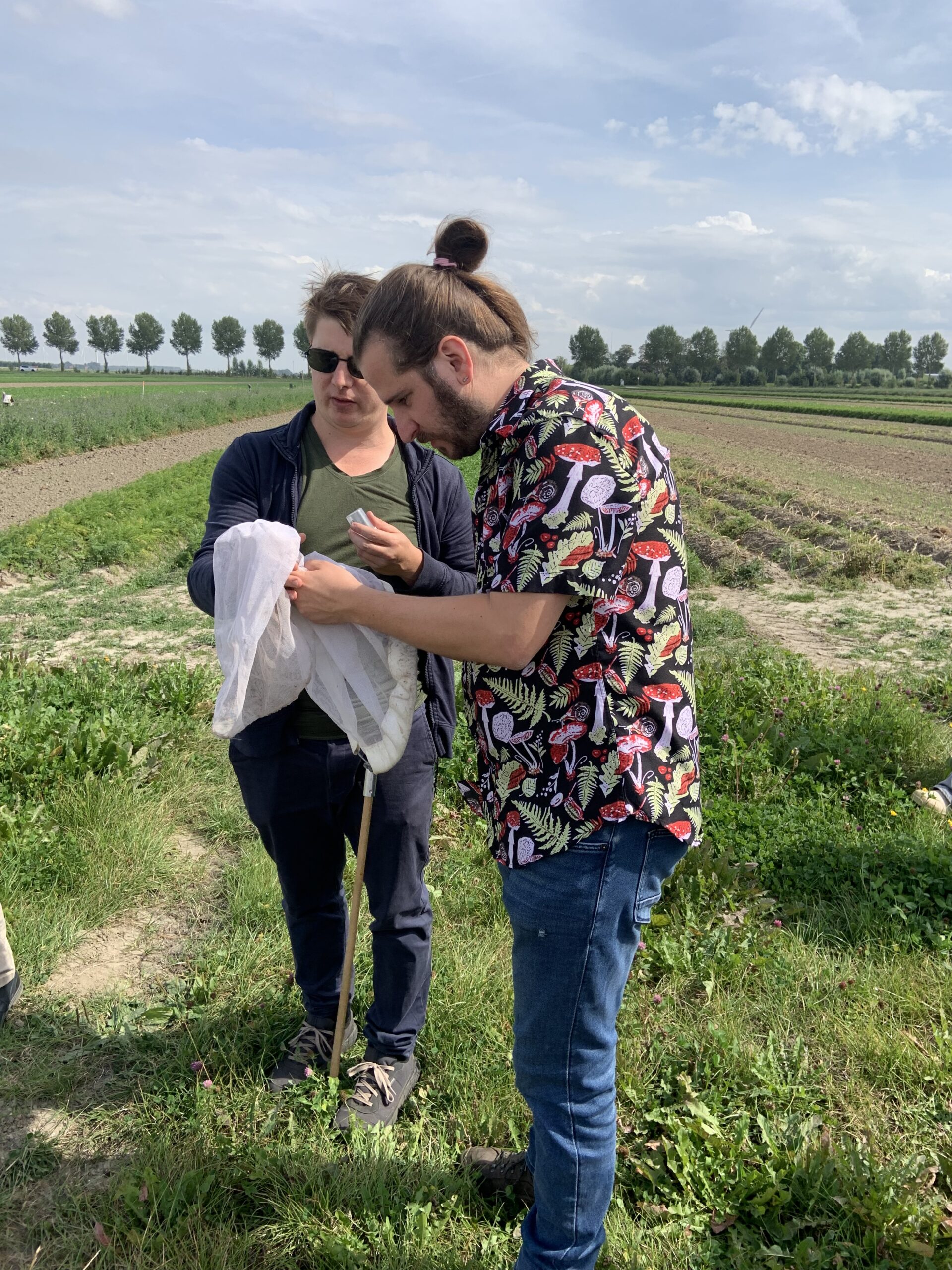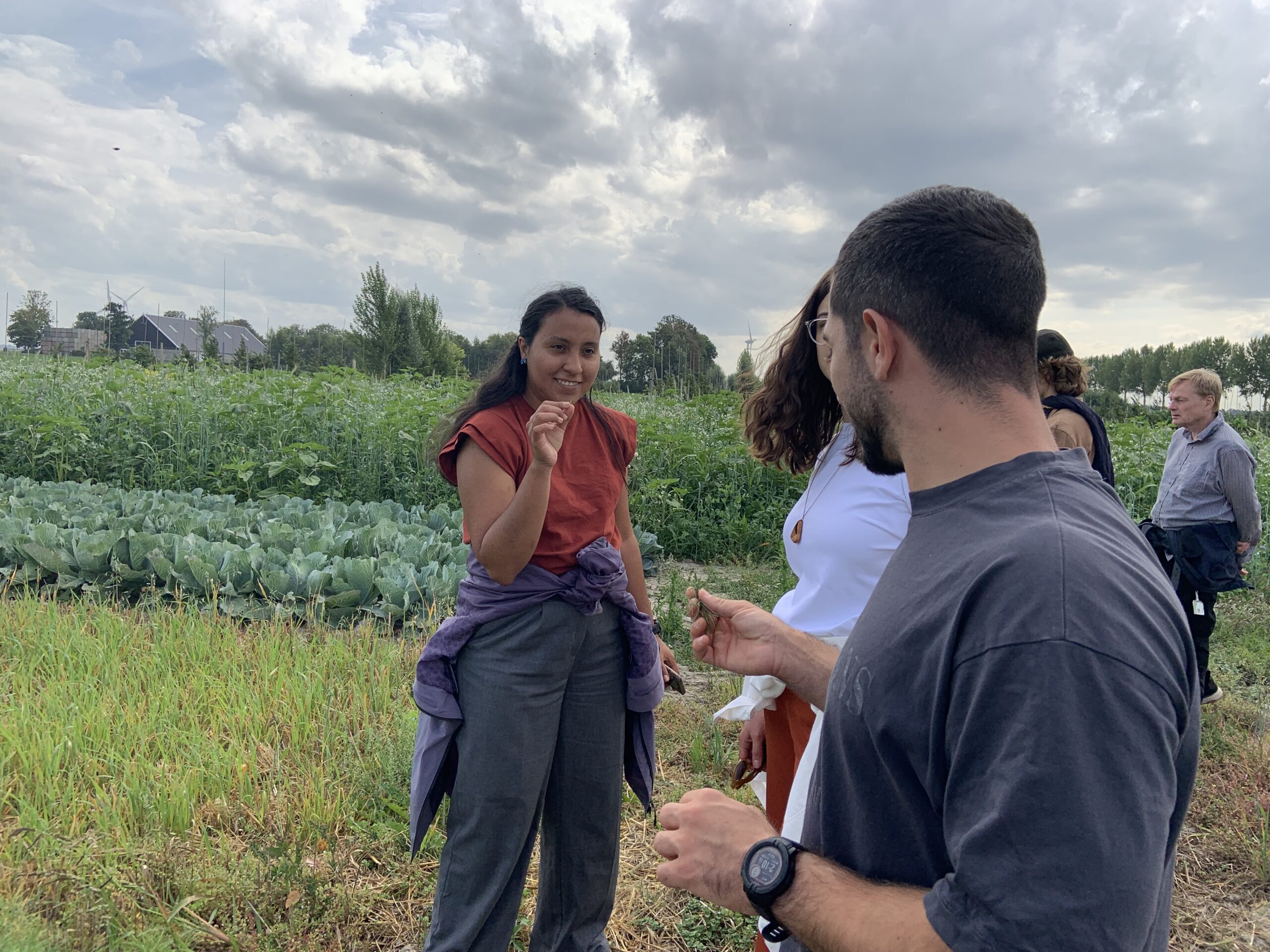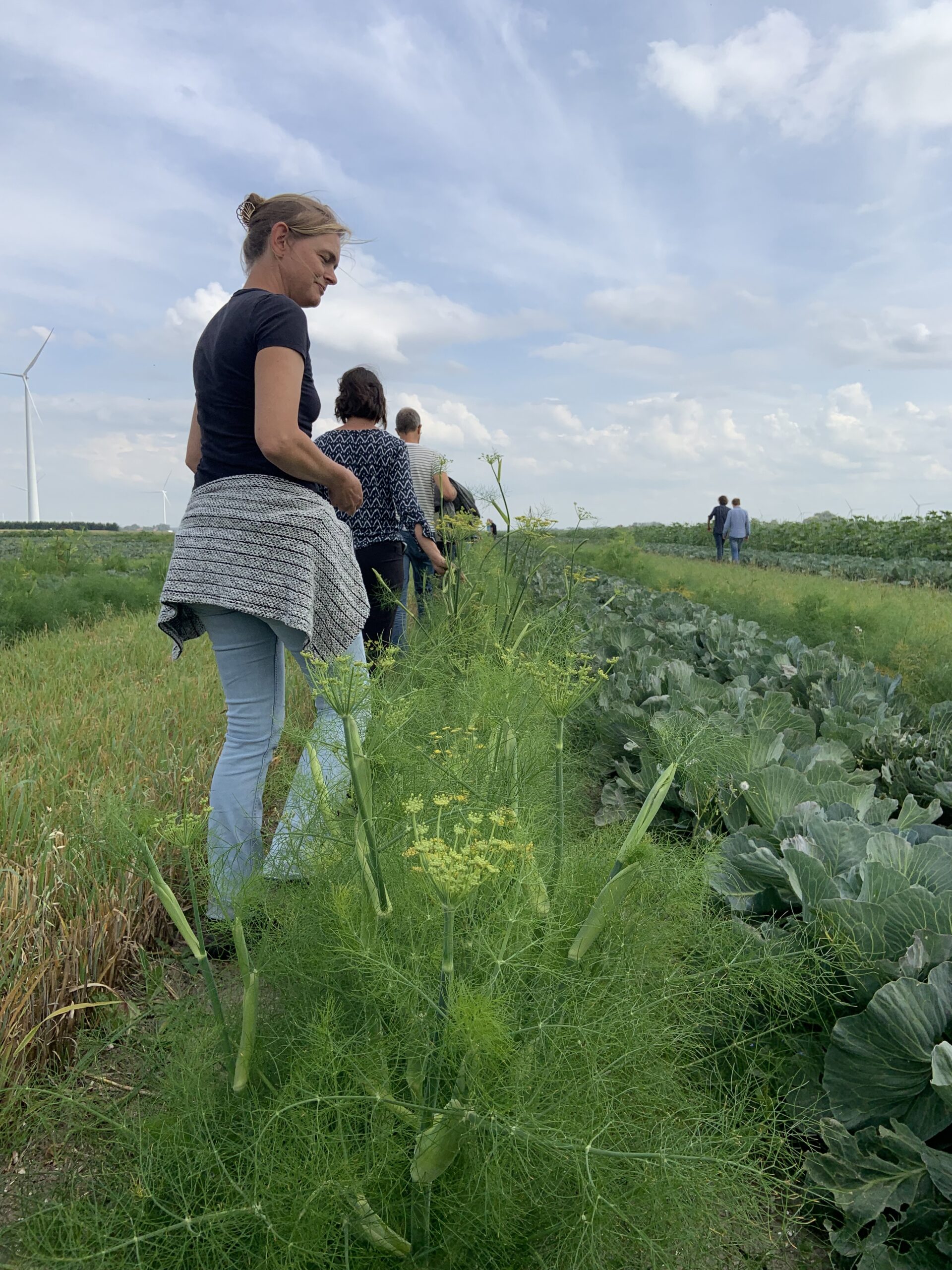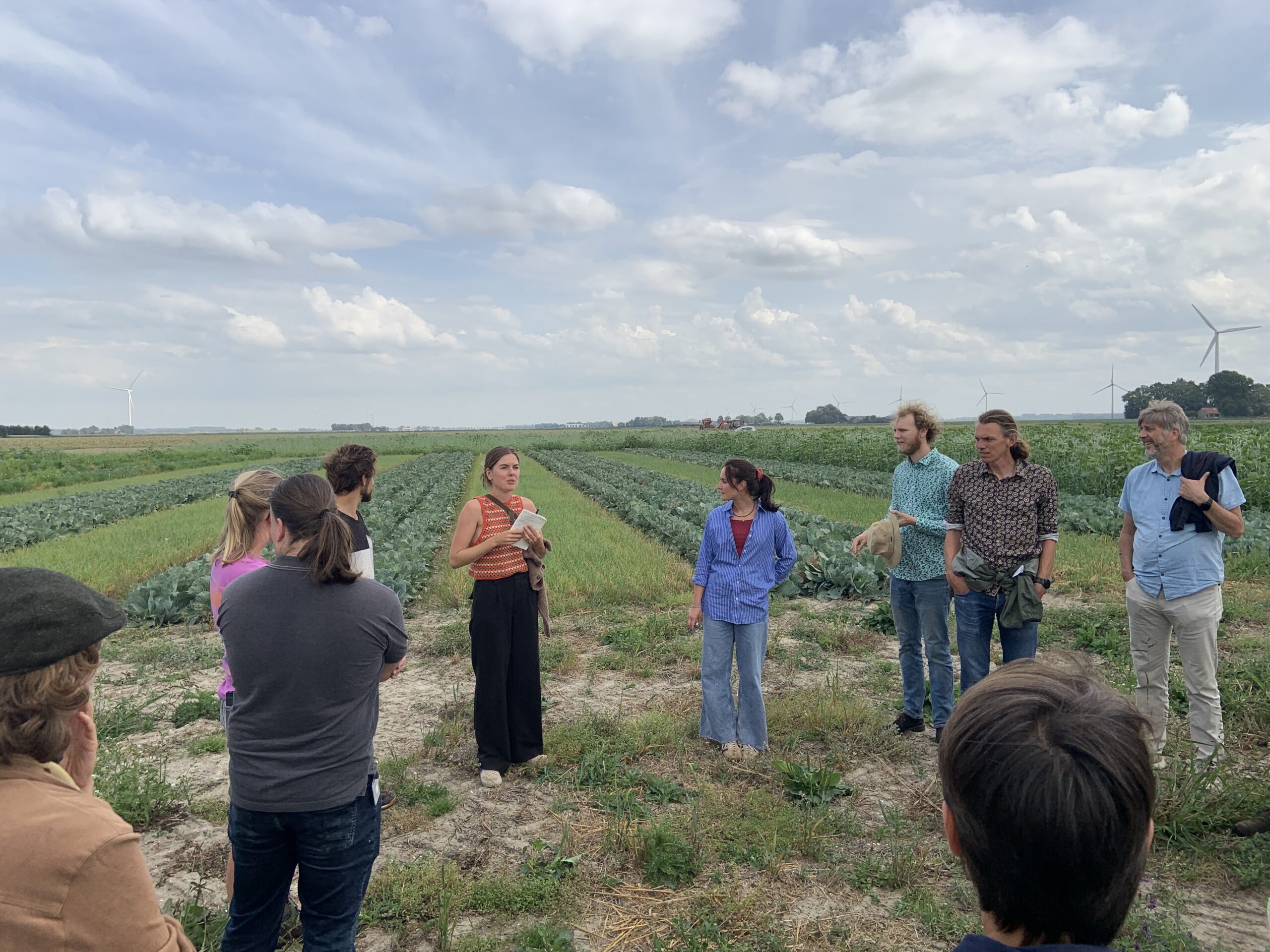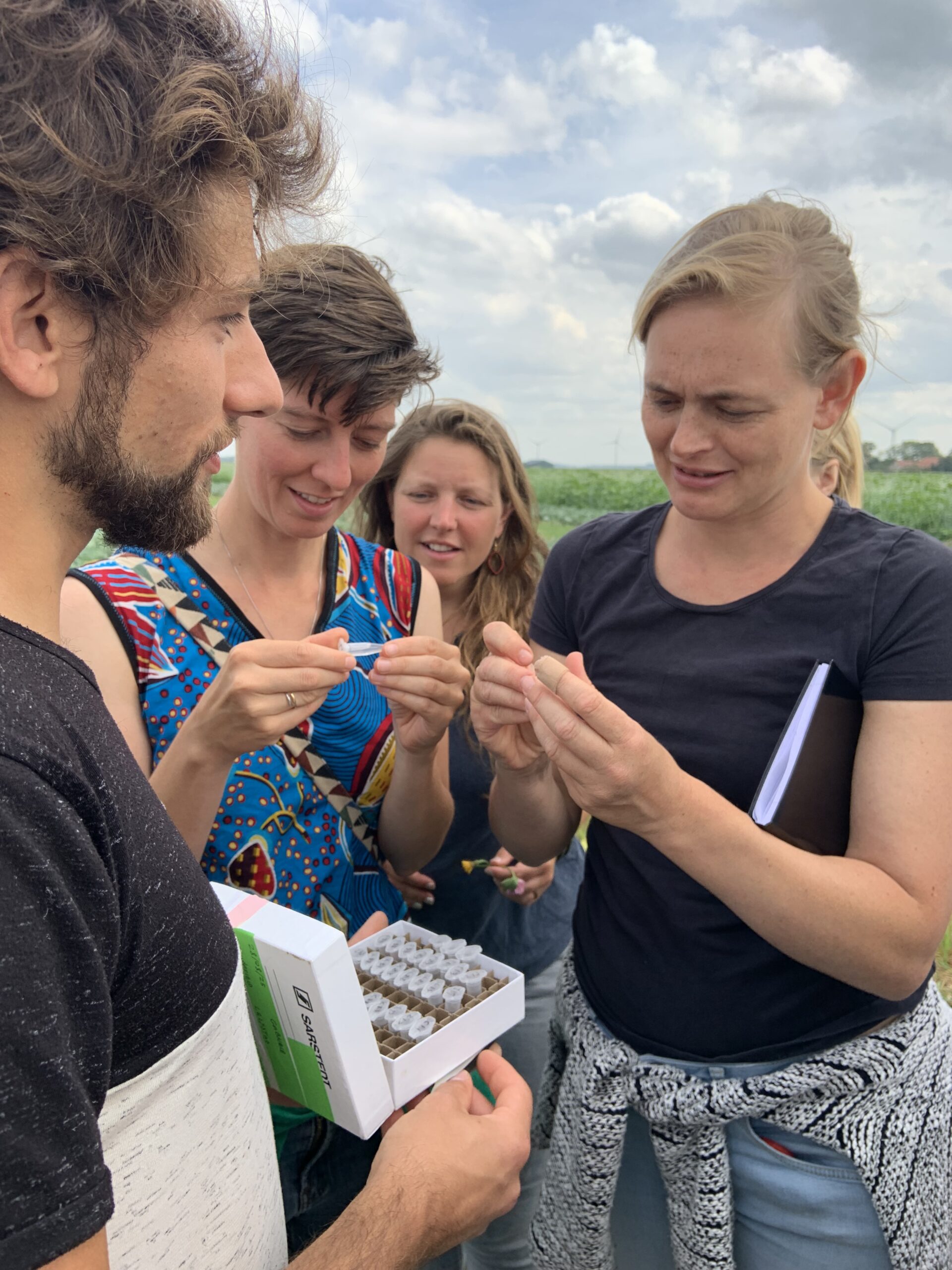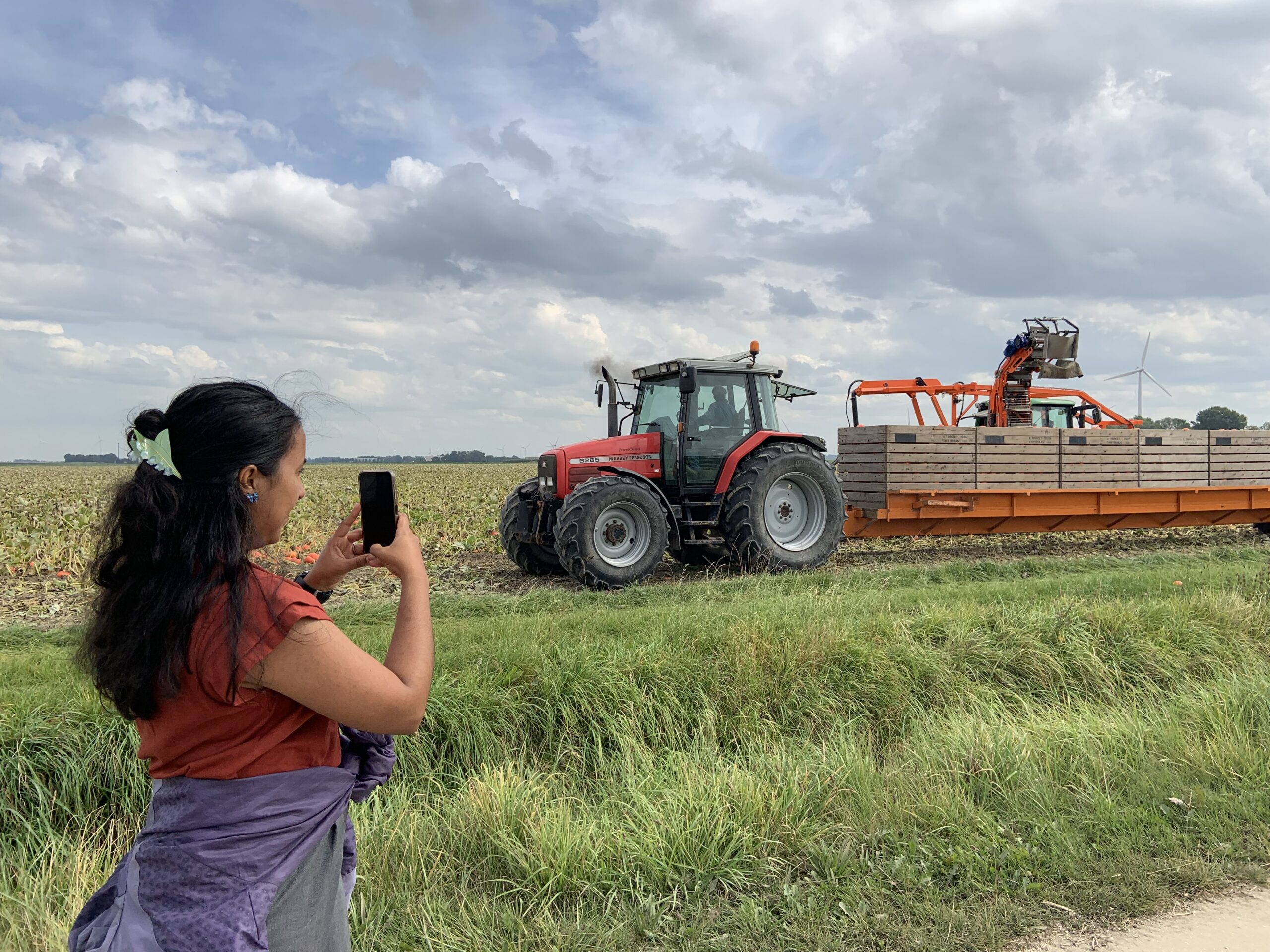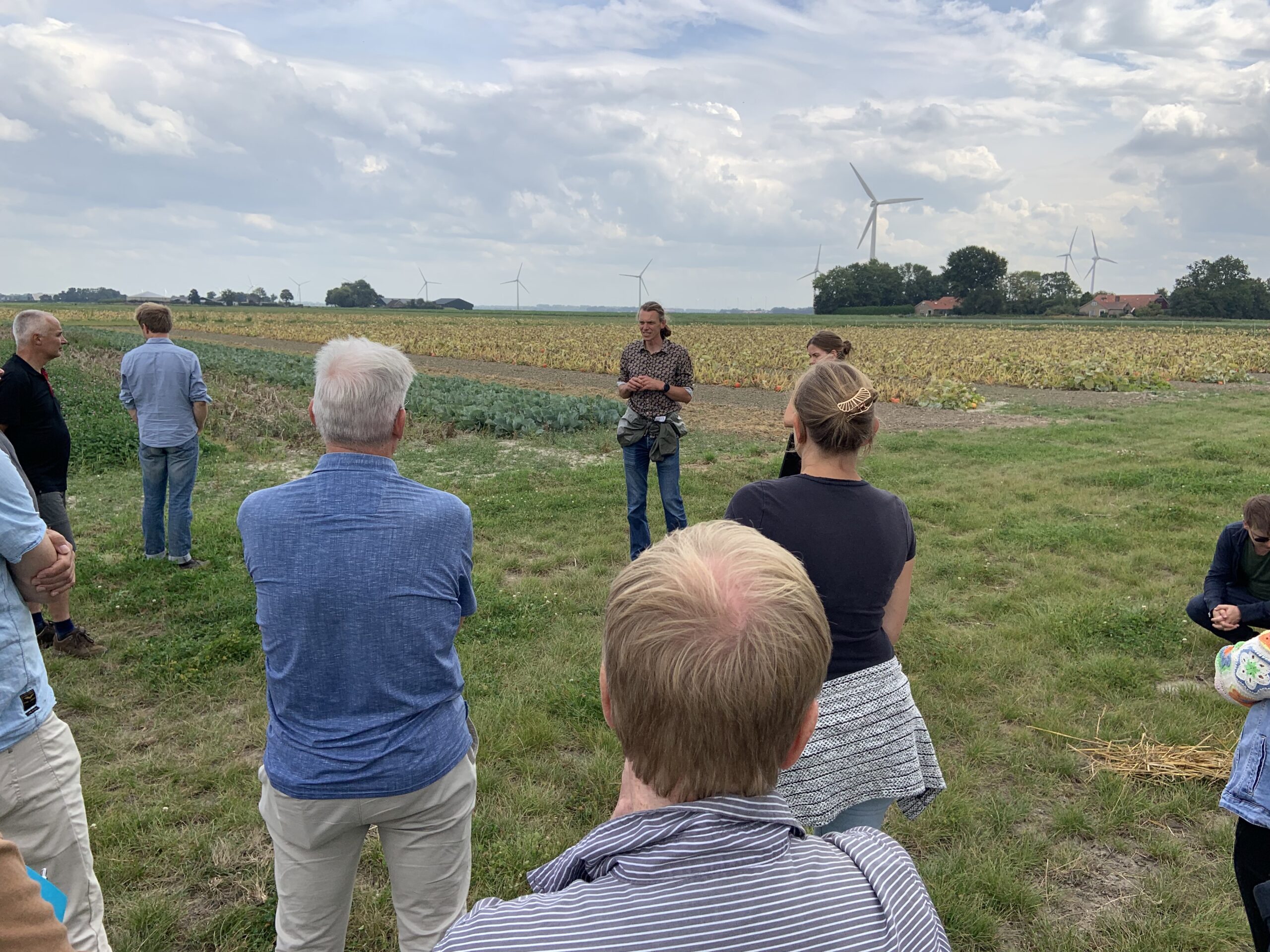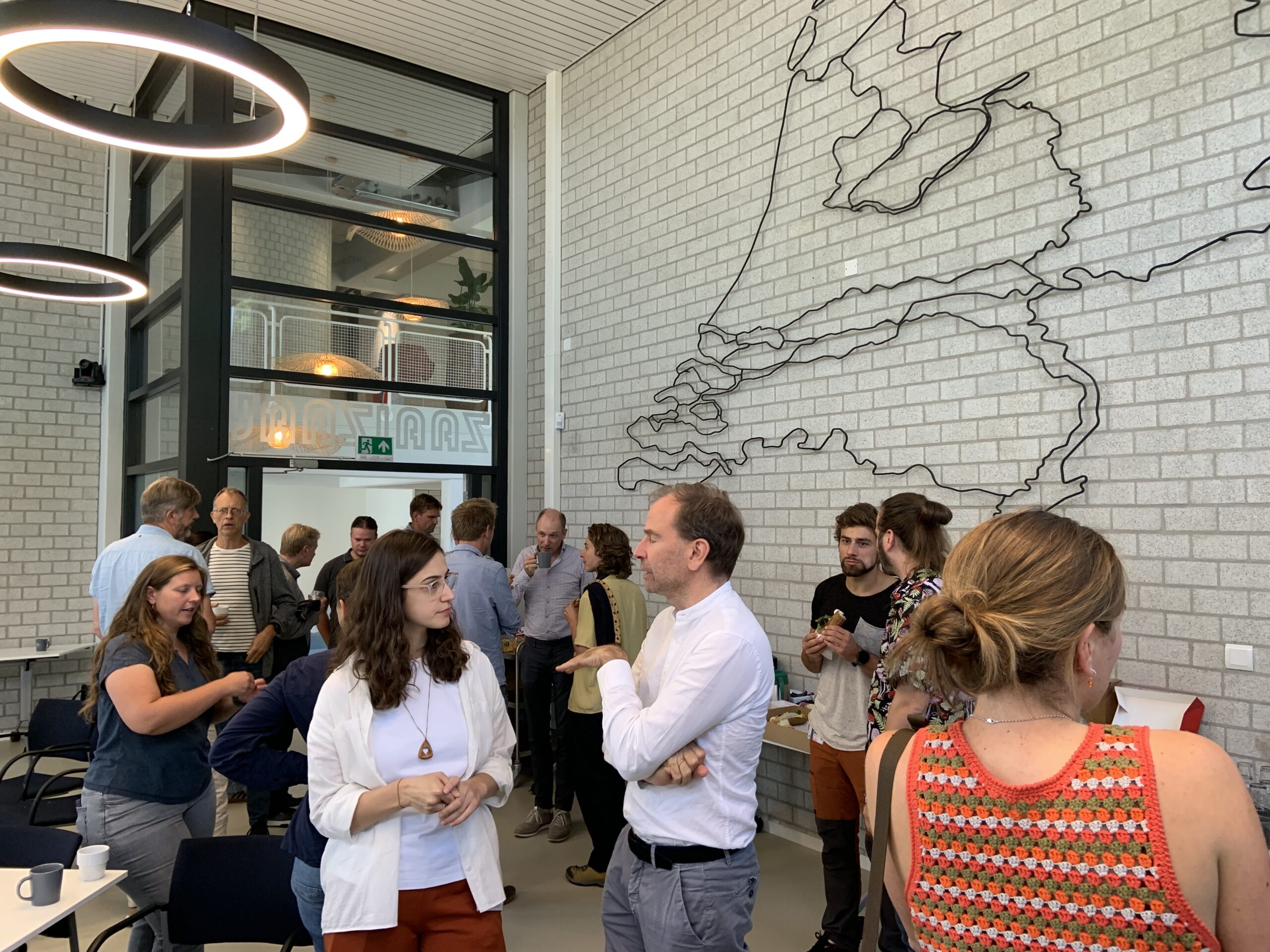On 28 August, we were guests at WUR Open Field Crops and Farm of the Future in Lelystad. We spent the morning with our own researchers for a research meeting. We listened to eight presentations of the initial results! A wide variety of results were presented.
Kostas Kypros kicked off the research meeting. He took us through his research into crop root systems. In his research, he uses a computer model to simulate how plants grow, particularly underground. He is investigating this for the combination of faba beans and oats.
Next, we listened to Margherita Berri. She highlighted one of her research projects, in which she collaborates with Kostas and Gabriele Bolletta. The three of them are investigating the effect of underground processes in strip cropping. They are doing this through a multidisciplinary experiment in which they place barriers underground to block the underground processes. They then observe whether this has an effect on plant growth, the development of pathogens and the insect community around the crops. Based on the initial results, there do indeed appear to be differences when the underground processes are blocked.
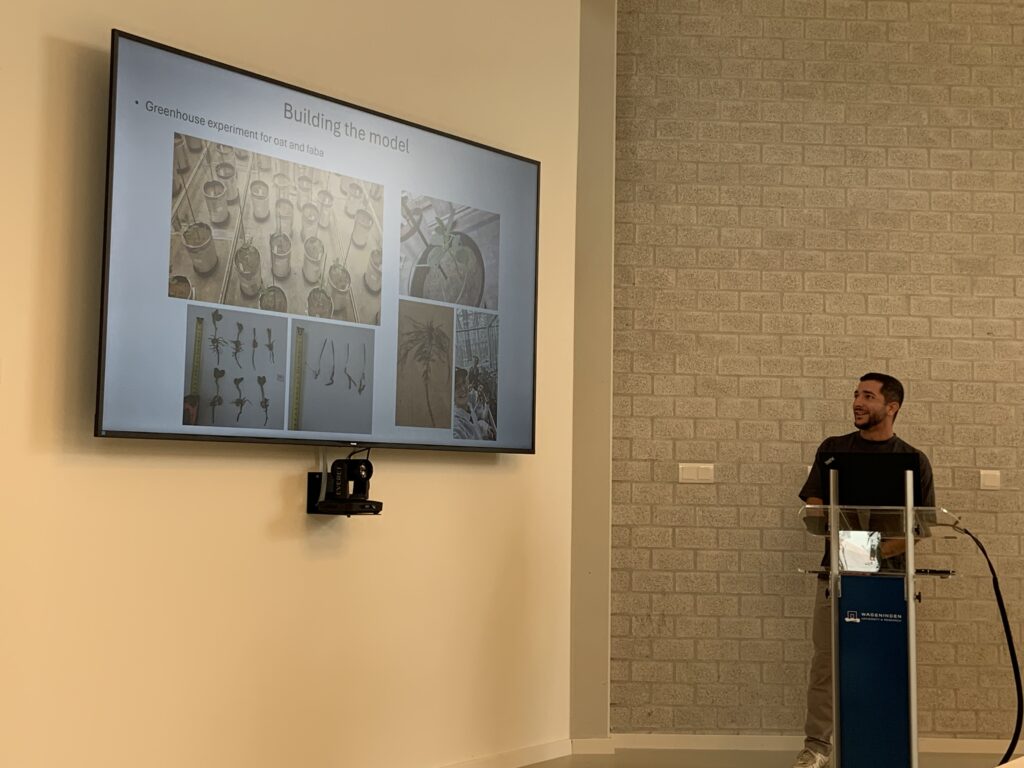
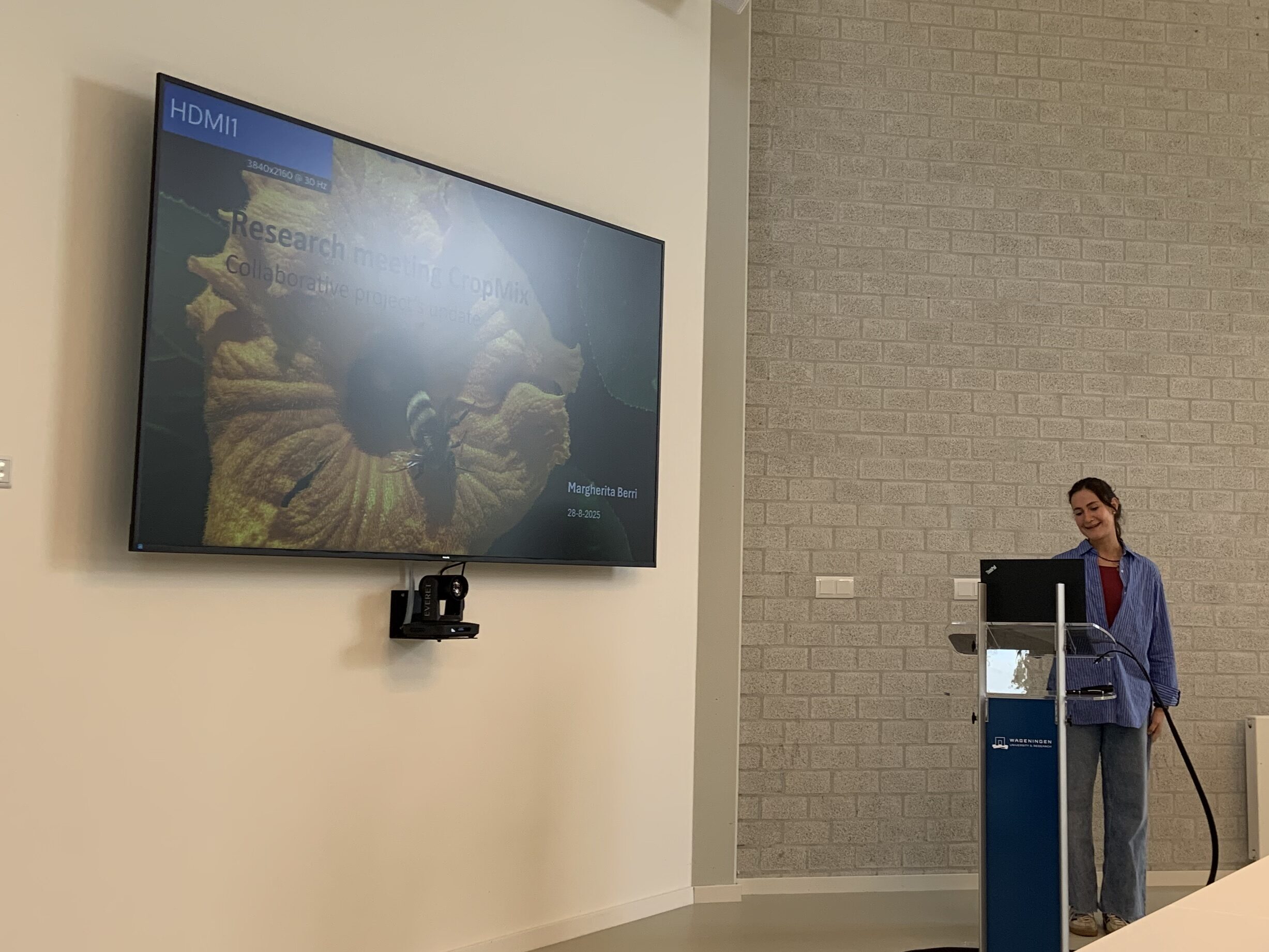
Esther Moinat researches arable flora, also known as weeds, and presented the results from the CropMix+ network. Together with a number of other PhD students, she investigated the influence of strip cropping in potatoes and cereals on the presence of arable flora at 25 arable farms. Results from two years of measurements show that there are more arable flora in strip cropping, with the effect being greater for conventional farms.
After the break, Thijs Fijen gave a brief sneak peek of the results of Rik Waenink, who also conducted research into insect biodiversity in the CropMix+ network.
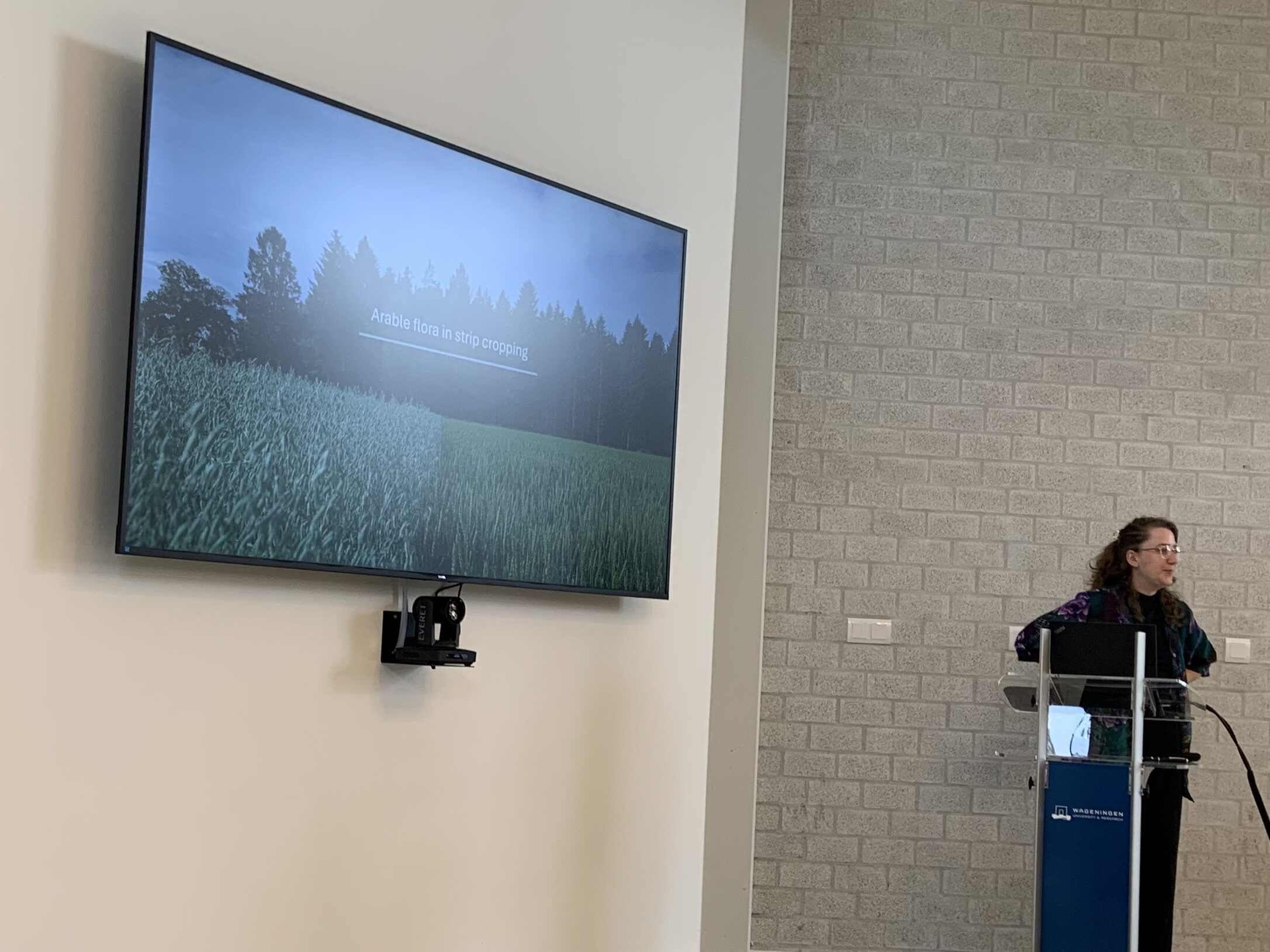
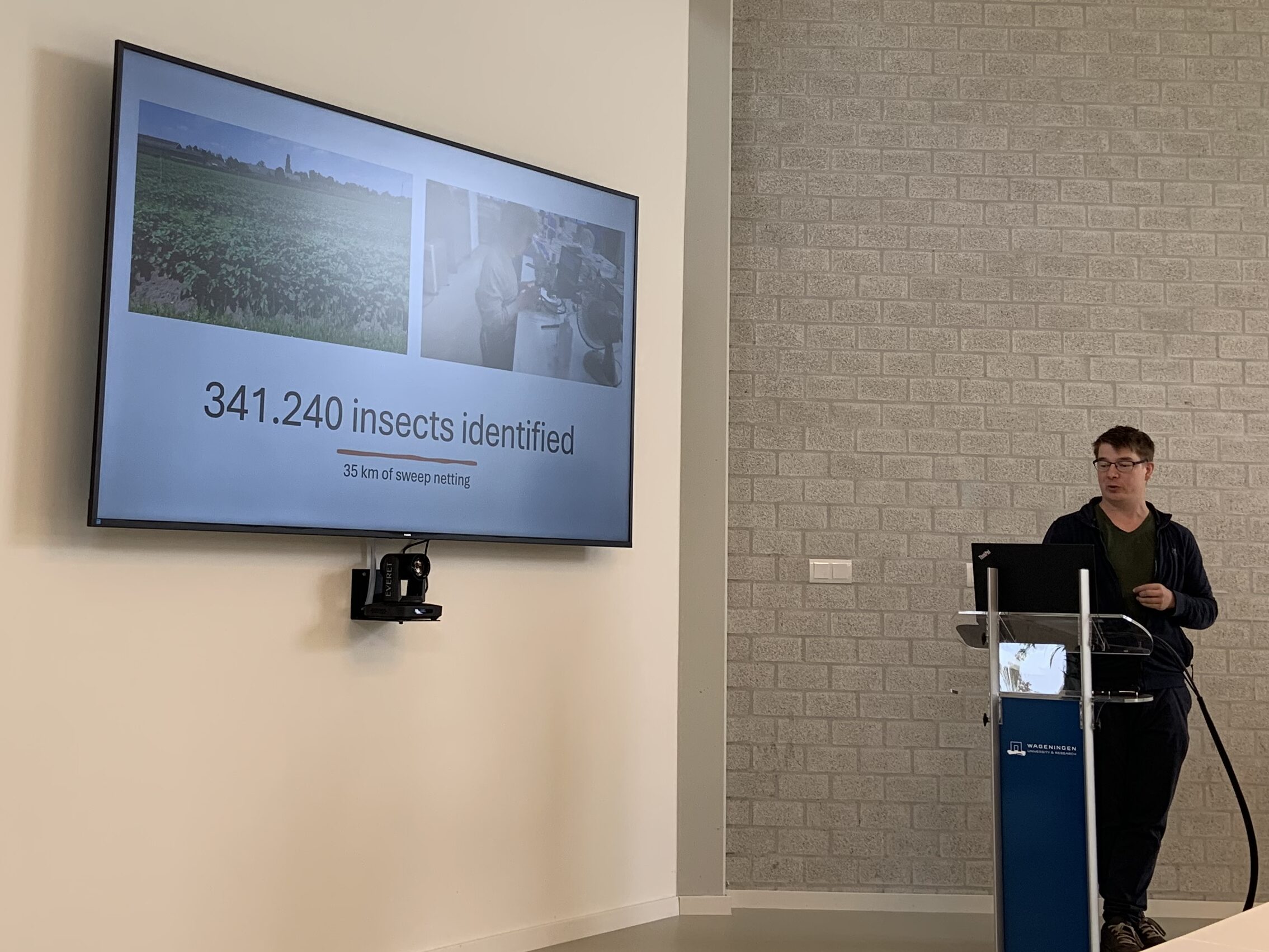
Anna de Rooij and Bart Burger gave a presentation highlighting some of the key findings from two years of biodiversity monitoring in the arable farming network. The number of bird species is structurally higher in strip cropping. Predation of the clay caterpillars that are released has been expanded this year with the installation of cameras to see which animals are trying to eat the caterpillars.
Next up was Alfaima Solano Blanco. She talked about the model she developed to design a strip cropping configuration with the best possible gross yield. Her model shows that it is possible to achieve the same gross margin with strip cropping as with monocultures.
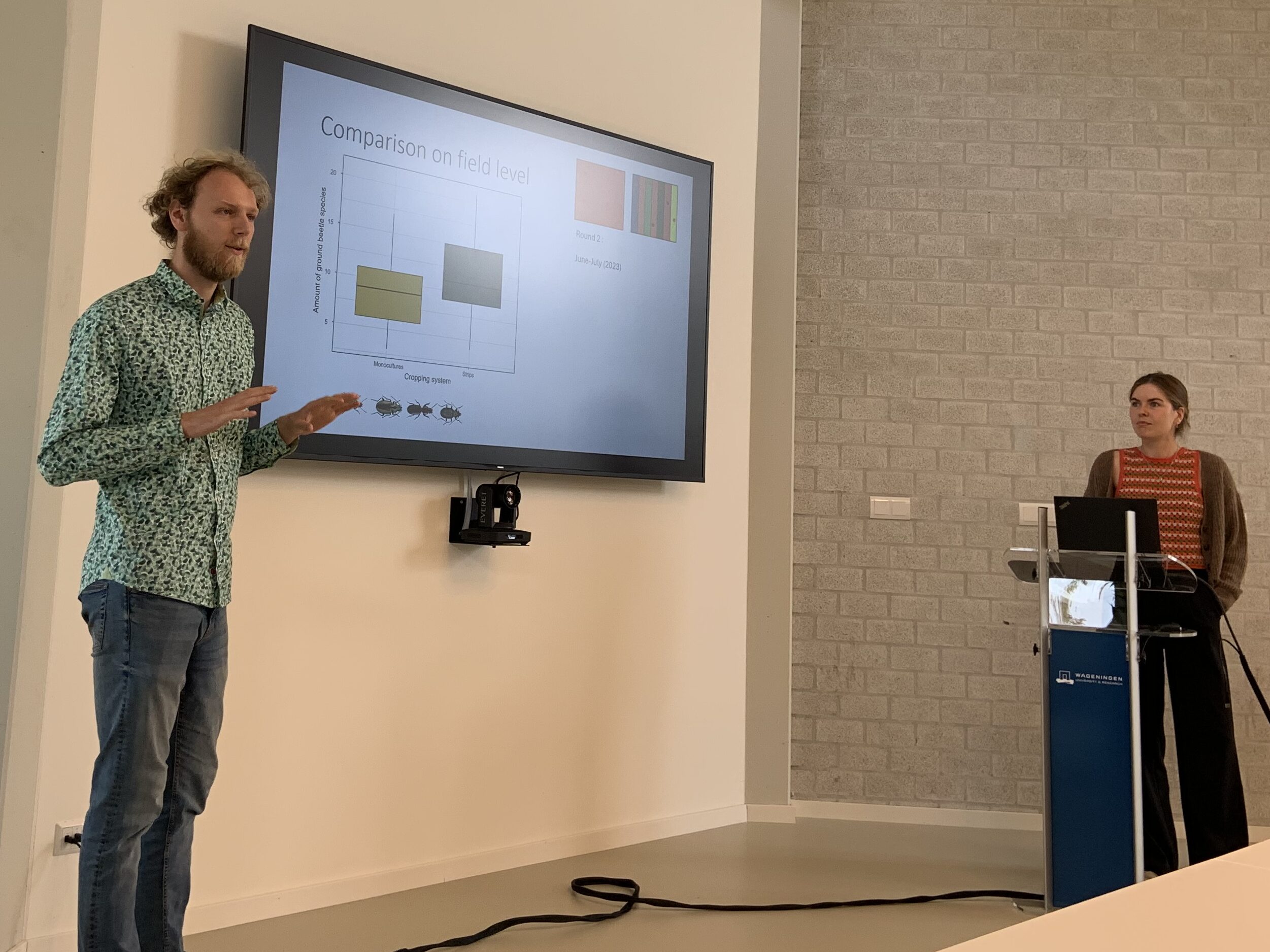
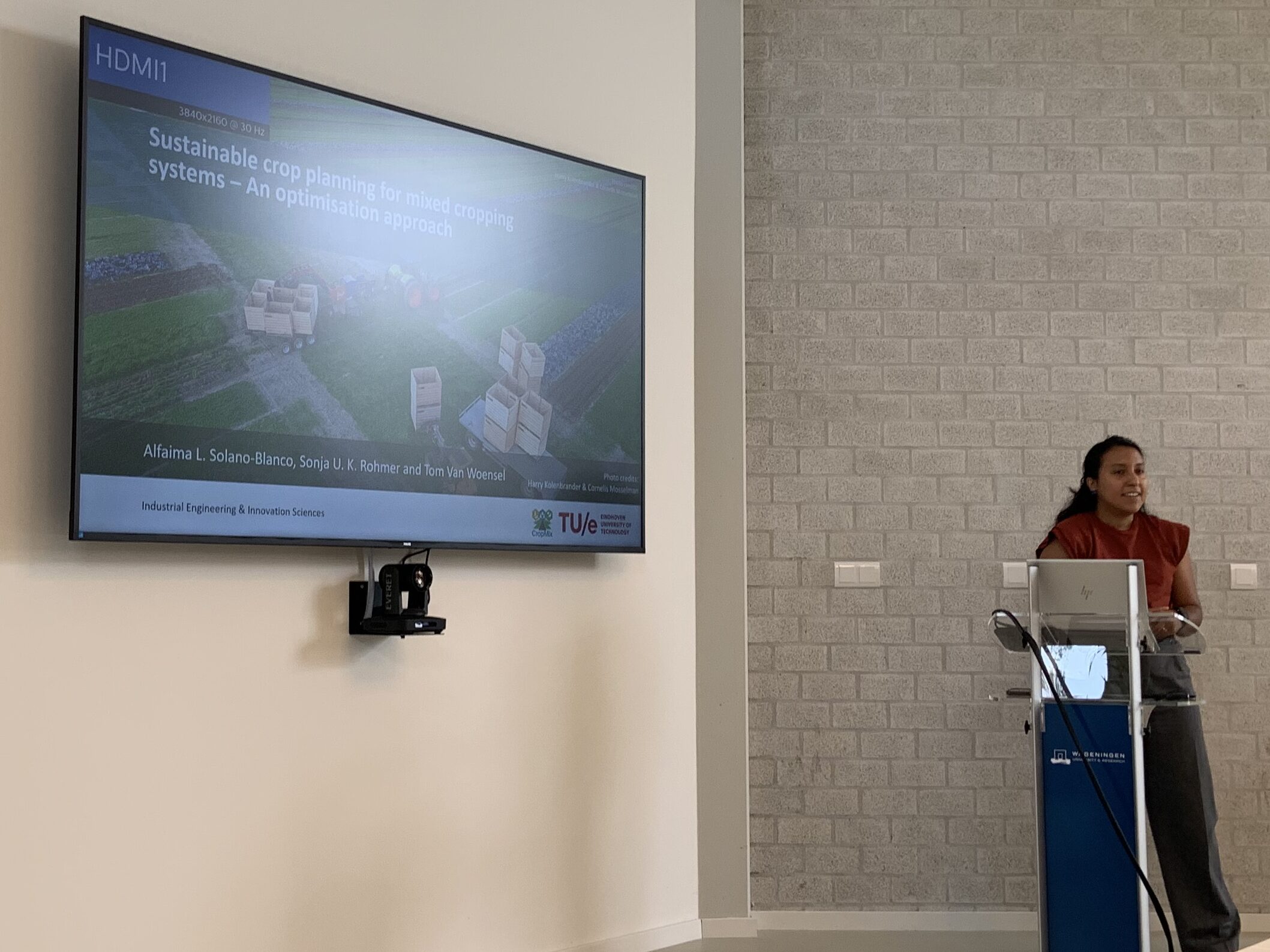
Tugce Canbilen Suticen's story tied in nicely with this. Her research focuses on distribution networks, i.e. what happens after the harvest. In strip cropping, farmers have smaller volumes of a greater variety of products. By collaborating with other farmers in the region, farmers could set up a small collective that could supply the short chain, possibly by doing some of the processing of the crops themselves. In her research, Tugce designed a model that can determine which supply chain is most suitable for strip cropping products: the long chain via a wholesaler or the short chain by supplying directly to, for example, hospitals, universities or caterers in the region.
Finally, Daphne Schoop gave a presentation on her research into institutions in the food transition. She explained the living lab on administration, which is a case study for her research. In this living lab, various CropMix partners are trying to find a solution to the heavy administrative burden that strip cropping entails in the annual combined declaration. RVO is also involved in this living lab. One issue, for example, is that RVO defines a plot as a piece of land with a single crop. As a result, farmers have to register many more plots than their colleagues with monocultures. Daphne is looking at how the relationships between different parties cause the system to go amiss.
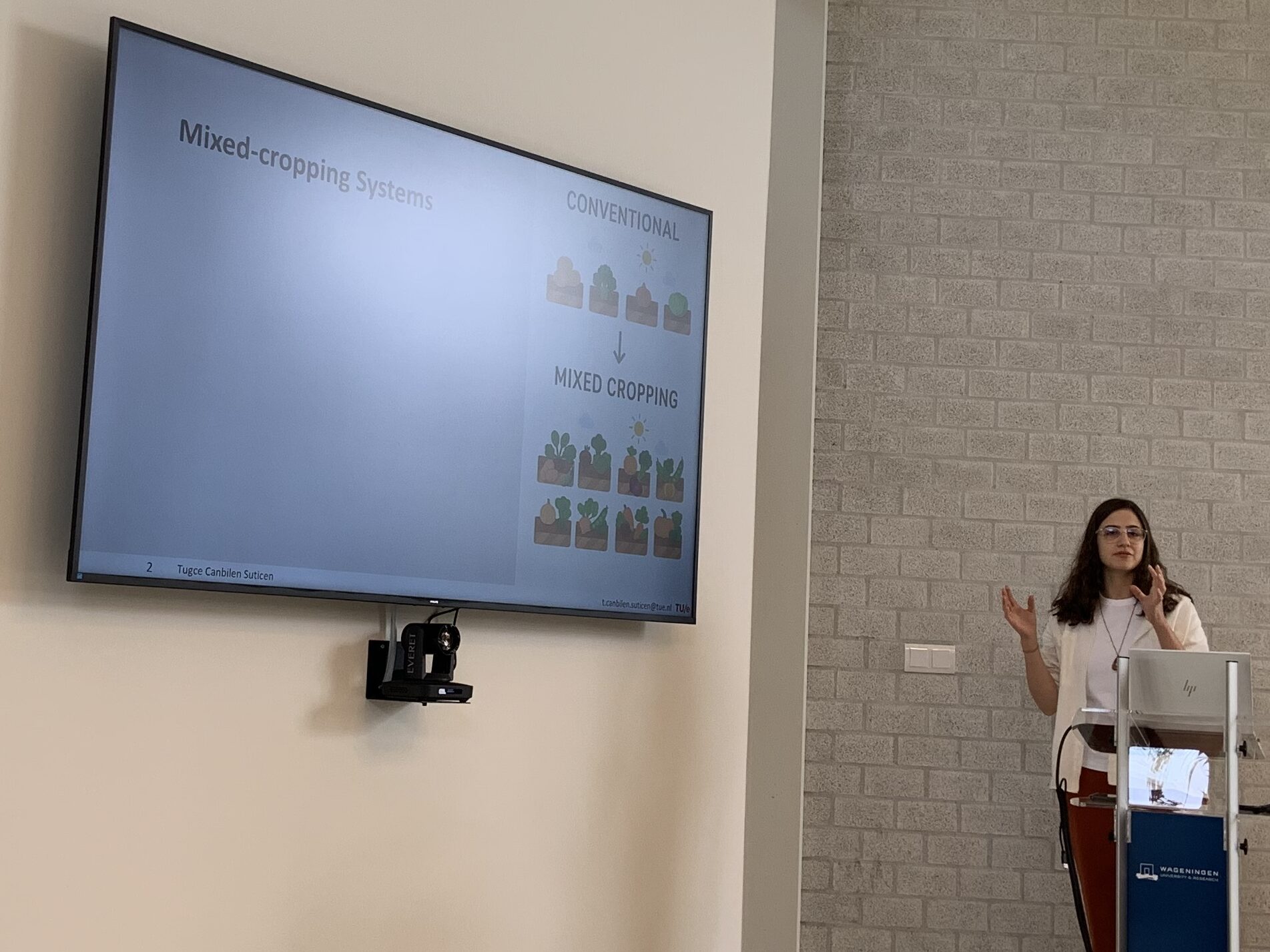
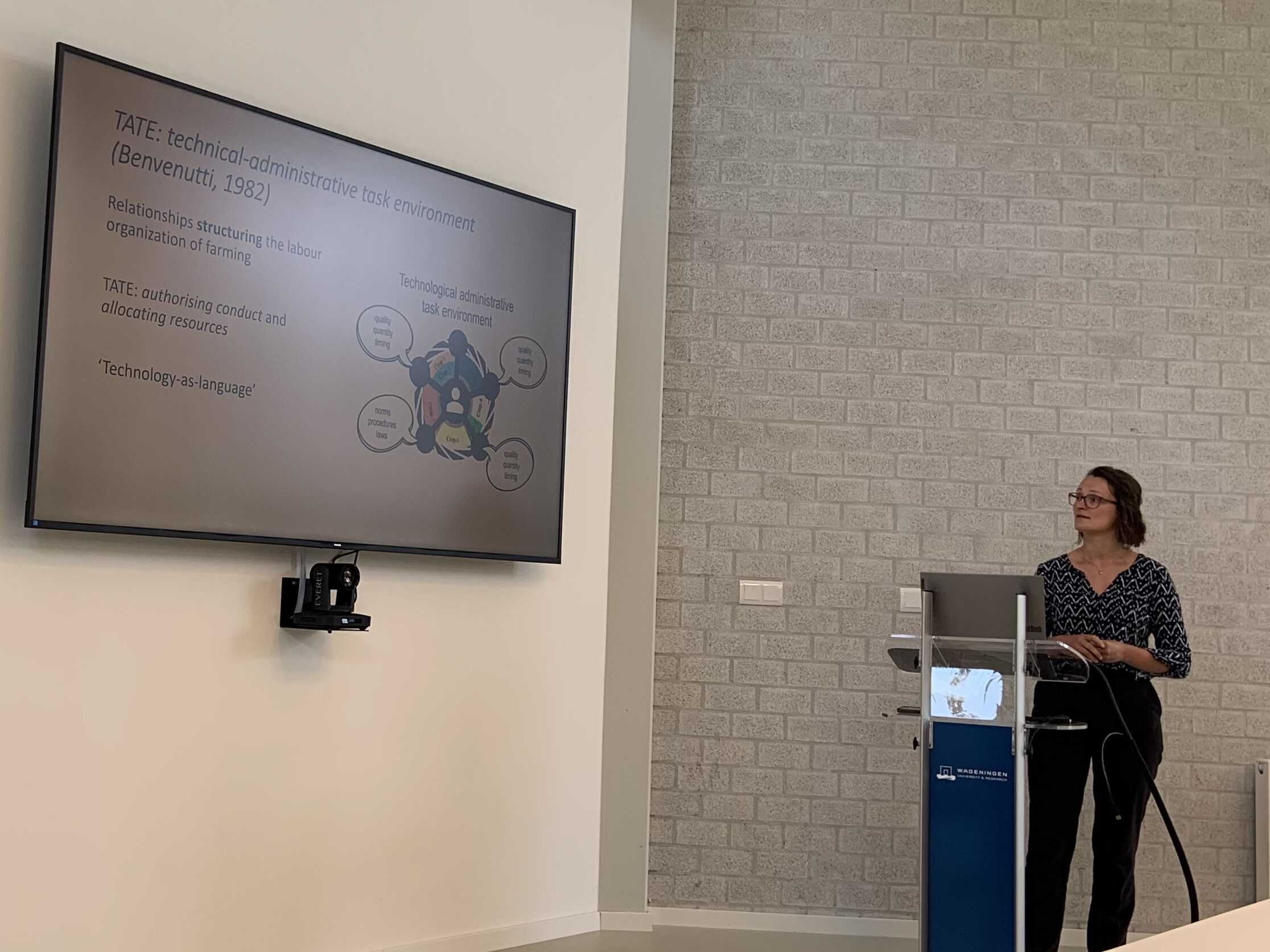
Following the presentations by our researchers, colleagues from Open Field Crops joined us and Pieter de Wolf, project leader of Farm of the Future, gave a presentation to introduce Open Field Crops and Farm of the Future. It became clear that CropMix and Farm of the Future both work with strip cropping, but their goals are different. Whereas Farm of the Future is a demonstration farm that shows the possible future of arable farming (in Flevoland), CropMix focuses on scientific research into the effects of strip cropping and crop diversity. ‘Farm of the Future tests the system as a whole to see how workable it is in practice, but of course we are not really representative. We take much greater risks than an arable farmer would take. That is the added value of our research, even though it is not scientific,’ says Pieter de Wolf.
After the introduction, we went outside to learn more about the Farm of the Future's strip cropping system and the CropMix system experiments. Lennart Fuch talked about their experiences with the system trials of Farm of the Future. Overall, their experience has been positive, but the 3-metre strips are a bit labour-intensive. They therefore want to continue only with the 15-metre-wide strips, which require less labour.
Anna de Rooij and Dirk van Apeldoorn gave a tour of CropMix's strip cropping system experiments. Currently, there is a replica of a trial that lies in Wageningen where they are investigating whether fennel has a positive effect on natural pest control in cabbage. Gabriele Bolletta explains: ‘Farmers in our network indicated that fennel had a positive effect on their other crops. We are now testing this with a control condition at two locations.’ In addition, there was a trial in which lobularia was added between the cabbage plants as a host plant for natural enemies. The idea is that they benefit from the nectar present in the flowers.
We concluded with a discussion. What are the similarities and differences between CropMix and Farm of the Future? And how can we ensure that we continue to work together and complement each other? To be continued!
Thank you to WUR Field Crops for their hospitality!
